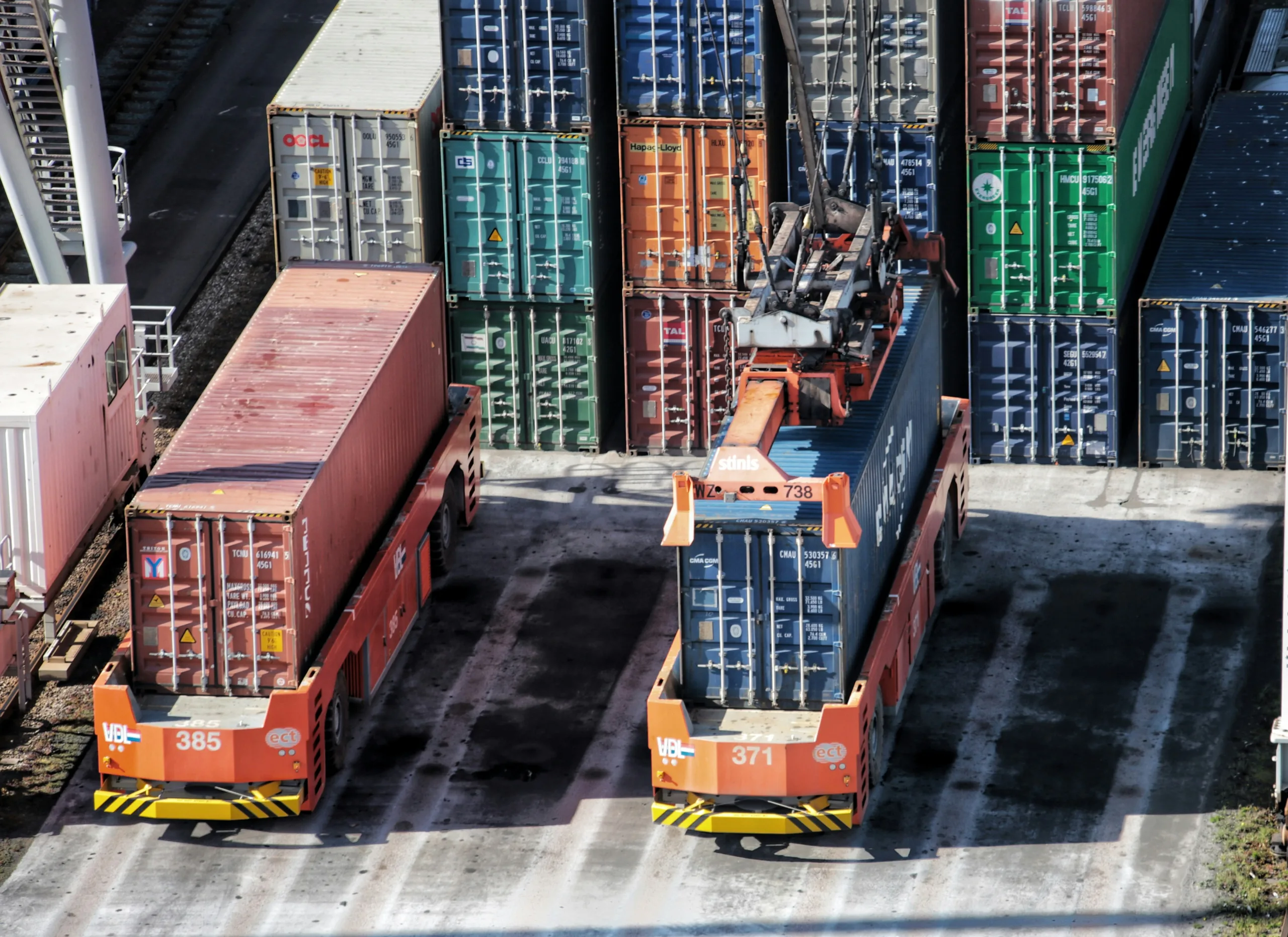


Meet the Logistician!
Oleg Yanchyk - CIO How would you describe your current position to someone that doesn’t work in the transportation logistics industry? I help the company with all the data/analysis needs. How did you end up working in logistics? I got into University of Tennessee MBA program and was selecting my major, Supply Chain/Logistics was a no brainer after I found out how many inefficiencies the industry had. It quickly became my professional goal to simplify the process. How many years have you worked in logistics? 20 years What are some of your favorite things about working in logistics? Constant challenge that is different by geography, transportation mode, shipper and carrier process. What surprises do you encounter? How much waste there is still in the industry that is so key to our function as a society. Do you have any fun work stories you’d like to share? It was super fun and rewarding to figure out how to ship medical supplies and essentials at the beginning of COVID era. Do you have a favorite saying? "Game Time! Kiddie pool is down the street, we play for real!" What do you like to do in your spare time? Coach soccer, camp, spend time with family, do landscaping. What advice would you give your 21yr old self? Nothing in life is as bad as it seems or as good as it seems, have to stay even keeled and tackle challenges as they arise. What are some challenges that you see in the future of supply chain, and what do you think will happen? Biggest challenge is stale processes that shippers, carriers and providers...
Meet the Logistician!
Sarah Christensen - Client Success Advisor How would you describe your current position to someone that doesn’t work in the transportation logistics industry? I work as an account manager for multiple companies, I ensure excellent customer service and oversee the timely pickup and delivery of loads. I also maintain effective communication to address any issues that arise. How did you end up working in logistics? I was looking to get out of manufacturing and landed across this job on Indeed. I took a shot and they hired me! How many years have you worked in logistics? 5 ½ years What are some of your favorite things about working in logistics? I like the relationships I develop with not only the customers, but the carriers as well. What surprises do you encounter? Everyday brings new surprises to work through, the way the team handles it together is key. Do you have any fun work stories you’d like to share? Day to day we find ways to make each other laugh and learn more about each other. Do you have a favorite saying? “The answer is always no if you don’t ask” From the great Dean Corbolotti What do you like to do in your spare time? When I am not cheering on my kids at their sports, I enjoy reading or going to the movies. What advice would you give your 21yr old self? It all works out the way it’s supposed to, have fun and enjoy life. What are some challenges that you see in the future of supply chain, and what do you think will happen? One big challenge...
Meet the Logistician!
Tashi Budilovsky -- Business Development Representative How would you describe your current position to someone that doesn’t work in the transportation logistics industry? I help customers and carriers by pairing shipments with available capacity for the best possible price so that everyone wins. I source this capacity with relationships I’ve built or by making calls and negotiating. When my kids were little, I used to explain it as, I’m the one that helps get the candy to the store. How did you end up working in logistics? My best friend was working at C.H. Robinson and introduced me to the great world of logistics and suggested I interview. The company culture, the talent there, the training - everything was exceptional and I spent over a decade there with an incredible team and built relationships with carriers, dispatchers, and people I still talk to today. How many years have you worked in logistics? Hard to believe but I’ve been in the industry since ‘06 so 18 years. What are some of your favorite things about working in logistics? I love the thrill of it and the hunt. I’m a busy bee and having a career in logistics suits me. It’s a lot of hustle and bustle throughout the day and good definitely outweighs the bad. Lots of problem-solving, strategy, and negotiating day in and day out. Meeting new people daily - it’s great. I’ve built great relationships with carriers over the years and it’s not just business… we get to know each other and become friends. Not just a broker, but sometimes an unlicensed psychologist for some so it’s not just...
Meet the Logistician!
Anna Jonak -- Financial Compliance Manager How would you describe your current position to someone that doesn’t work in the transportation logistics industry? In my role, I am responsible for ensuring the timely payment of all accounts payable and collection of all accounts receivable. How did you end up working in logistics? I was interested in logistics because I’ve always enjoyed working together with others and building work-relationships, which I’m able to do in my current role. Specifically, I routinely work with customers and carriers to ensure bills are paid and collected, products are delivered in a timely manner, and all parties involved are satisfied with the services provided. How many years have you worked in logistics? Seven years. What are some of your favorite things about working in logistics? As mentioned above, I have really enjoyed building relationships with both customers and carriers. I’ve had the opportunity to meet great people with whom I enjoy communicating regularly. What surprises do you encounter? The continuing evolution of technology in the logistics field has been the biggest surprise and challenge I’ve encountered. Fortunately, my co-workers and customers have been incredibly helpful in ensuring I’m able to meet these challenges. Do you have any fun work stories you’d like to share? While I don’t have a specific story, I enjoy speaking with drivers, who often entertain me with fun stories of things they encounter on the road. Do you have a favorite saying? I do not. What do you like to do in your spare time? I enjoy outdoor activities with my family, friends, and dog. What advice would you give your...
Meet the Logistician!
Aimee Iwan -- Client Success Advisor How would you describe your current position to someone that doesn’t work in the transportation logistics industry? I am the primary point of contact for multiple customers. I manage their accounts by ensuring smooth operations, as in on time pick-up and delivery. Not only that, but I resolve issues, identify opportunities for sales growth, and monitor performance metrics. My role is crucial for maintaining customer satisfaction and driving business growth. How did you end up working in logistics? I earned my degree from Central Michigan University, majoring in Purchasing and Supply Management with a minor in Marketing. From my first year in college, I was drawn to logistics because it was a lot of problem solving and kept me engaged. After I graduated, I started my career as an account manager for a large logistics company. How many years have you worked in logistics? 6 years. What are some of your favorite things about working in logistics? I enjoy the teamwork aspect of logistics, where we collaborate to solve challenges together. Also, staying informed about economic trends and their impact on the industry is extremely interesting to see first hand. What surprises do you encounter? Everyday is a surprise. It keeps things fresh and exciting because there's always something unique to tackle with every new scenario that pops up. Do you have any fun work stories you’d like to share? I love working at Sleek Technologies; it's truly the best. And there are so many stories I could share. We're like a tight-knit family, always supporting each other and having a blast together. Our...
Meet the Logistician!
Dean Corbolotti, VP, Managed Services How would you describe your current position to someone that doesn’t work in the transportation logistics industry? I lead a team of skilled professionals who operate much better if I stay out of the way! How did you end up working in logistics? I knew a guy who worked for ABF Freight in Dayton, OH and they were looking for someone to do data entry on the weekends so I did that to help pay for college. Was paid a whopping $10 an hour! Big bucks back in 1989. How many years have you worked in logistics? Doing the math that puts me around 35 years now. What are some of your favorite things about working in logistics? The diverse group of people that you meet is pretty amazing. I also love that it’s ever changing while staying the same. You are basically moving things from point A to B but the “how” has changed dramatically over the years. What surprises do you encounter? Something new seems to happen weekly that makes me say “wow that’s a new one”. Not sure how many fields can say that. Do you have any fun work stories you’d like to share? Most of these would have happened after work hours and are probably not suitable for mass consumption. Do you have a favorite saying? Borrowed this from my dad years ago: “Take the high road, there’s less traffic” What do you like to do in your spare time? I like to travel both domestically and internationally. I also enjoy a round of golf, some cooking, watching football (Go...
Meet the Logistician!
Meet Wally (Matthew Wall), Team Lead, Driver Engagement! How would you describe your current position to someone that doesn’t work in the transportation logistics industry? I manage a team that brings in carriers (individual truck drivers and larger trucking companies) to use our app to book freight that customers (shippers) tender over to us. How did you end up working in logistics? Well the job market wasn't really great when I graduated from college in 2008. I worked construction for a year and then I found a job application for a carrier sales position. I read up about the role and thought it was something I would be good at, so I applied and ultimately got the job after a couple of interviews. How many years have you worked in logistics? 11 What are some of your favorite things about working in logistics? No two days are ever the same. Each day brings you something that you haven't dealt with before. What surprises do you encounter? Too many to list! Do you have any fun work stories you’d like to share? I’ve had the great fortune of meeting a lot of truck drivers. They are some of the greatest people in the world. One driver brought me a full Thanksgiving turkey in 2020 when some of my family members got Covid and we had to cancel our Thanksgiving. Do you have a favorite saying? “Logistics is not an expense, it’s an investment.” What do you like to do in your spare time? Travel to different countries. I’ve been to over 50! What advice would you give your 21yr old self?...
Comprehension of the Vast, Stormy Supply Chain
Weather related logistics issues were rampant last month, and just like during the 2020 pandemic shut-downs, people across the entire country realized how far-reaching logistical problems can be. Empty shelves due to overbuying, but also lack of timely deliveries, hit the everyday consumer hardest right where they live, nationwide. Many were suddenly faced with the inconveniences or severe impacts that happen when any piece of the supply chain sees disaster. Consumers can easily imagine that trucks struggle to make it down roads, even the largest highways, in harsh enough conditions. They experience that as well and may even have the option of staying home. Truck drivers aren’t so fortunate. Ice and poor visibility can cause accidents, offroading, impasses, and full road closures preventing deliveries from reaching their destinations. And yet, that’s only a part of the equation. Loading dock workers may be unable to make it to their shifts or safely do their jobs. Equipment on trucks doesn’t always survive extreme conditions, and mechanics & truck parts are subject to the same delays and hazards. Furthermore, even if some branch of the logistical network is clear, materials and resources further up the supply chain may face adversity and delays, which sends problems down the line affecting more and more goods and services. Behind the scenes at logistics companies, the daily art of connecting the pieces doesn’t necessarily run the same either. According to Sleek’s Will Doyel, “Relationships, tender acceptances, and patience are tested, revealing the hidden challenges faced by both asset-based companies and 3PLs. Understanding the capacity crunch caused by weather-related issues is crucial for all stakeholders.” “Beyond snow and...

